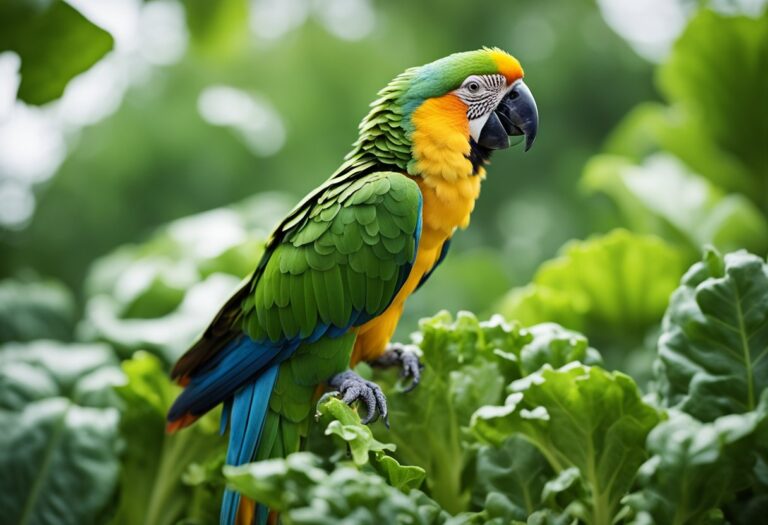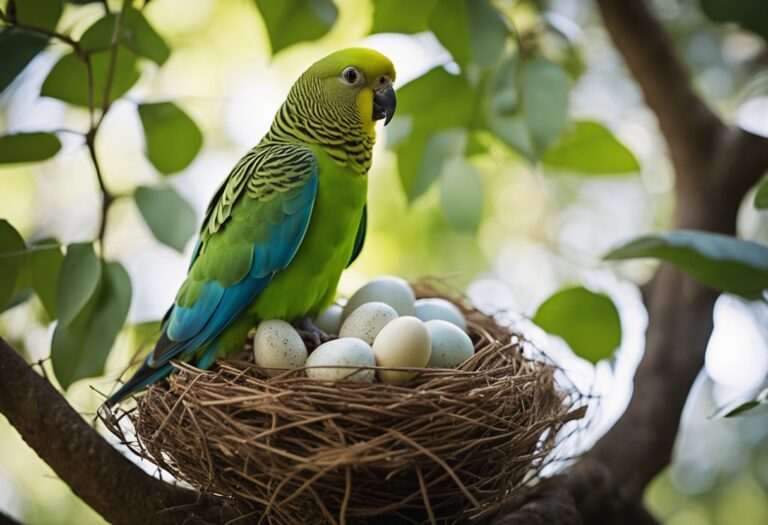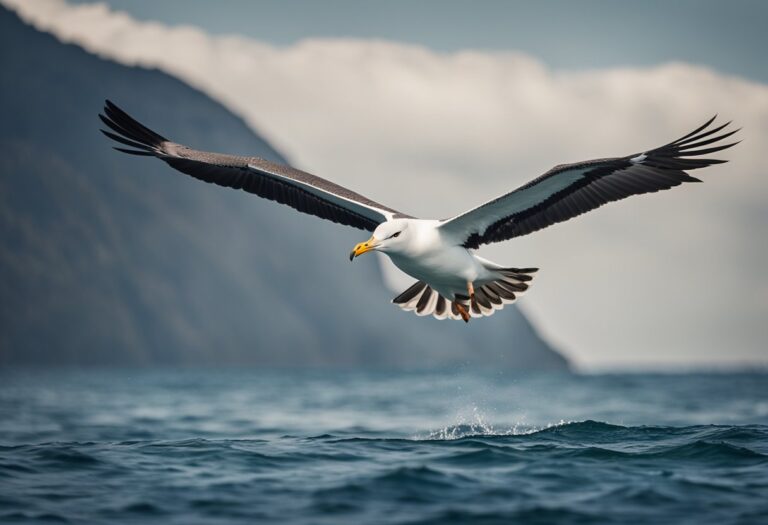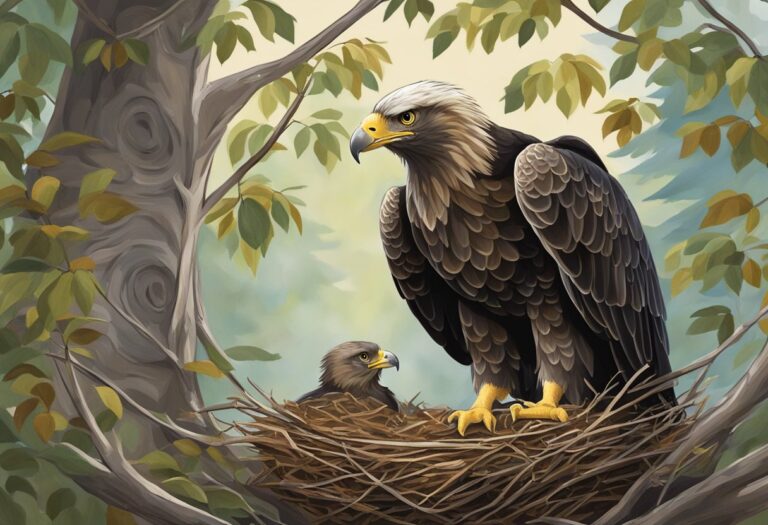Attracting hummingbirds to my yard has been a rewarding experience that adds beauty and life to my outdoor space. To successfully draw these charming birds, I focus on providing a suitable habitat with the right plants and feeders. By creating an inviting environment, I can enjoy their vibrant colors and delightful aerial maneuvers throughout the seasons.

One of the easiest ways to attract hummingbirds is by planting native flowers that produce nectar, like bee balm and trumpet honeysuckle. I also set up feeders to supplement their natural food sources. These feeders should be clean and positioned in areas where hummingbirds can easily spot them, ensuring they feel safe and comfortable while visiting.
By combining my efforts with the right plants and feeder placements, I can turn my yard into a hummingbird haven. Whether I’m an experienced birdwatcher or just starting out, there’s plenty to learn and enjoy while attracting these remarkable creatures.
Key Takeaways
- Providing a variety of nectar-rich plants will attract more hummingbirds.
- Clean and well-placed feeders increase my chances of seeing these birds.
- Creating a safe and inviting space enhances my backyard experience.
Things to know about Hummingbirds
Hummingbirds are fascinating creatures known for their speed and agility. I find it important to grasp their species diversity and migratory habits, as well as what they eat, to create a welcoming environment for them in my yard.
Species and Migration Patterns
There are over 300 species of hummingbirds, but the Ruby-Throated Hummingbird is the most common in North America. These birds are small, measuring 3 to 5 inches in length.
During migration, Ruby-throated Hummingbirds travel from North America to Central America. They can fly non-stop across the Gulf of Mexico, covering up to 500 miles in a single trip. Migration usually occurs in spring and fall, with males arriving first to claim territories.
These patterns helps me know when to put out feeders and plant flowers. By aligning my efforts with their migration, I can attract more hummingbirds to my yard.
Dietary Needs of Hummingbirds
Hummingbirds primarily feed on nectar, which provides them with the energy they need. They are particularly attracted to tube-shaped flowers that produce abundant nectar. Some popular nectar-producing plants include:
- Bee Balm
- Salvia
- Columbine
In addition to nectar, hummingbirds require protein, which they get from insects and spiders. I find it helpful to provide a diverse range of plants that serve both purposes.
To complement their diet, I also make sure to offer sugar-water feeders. I mix four parts water with one part sugar, and I avoid using red dye as it can harm the birds. Keeping these feeders clean is essential for their health.
Creating a Hummingbird Haven

To attract hummingbirds, I focus on providing the right shelter, water sources, and flowering plants. Each aspect plays a crucial role in making my yard a welcoming environment for these beautiful birds.
Suitable Shelter and Nesting Areas
Hummingbirds need safe places to rest and nest. I make sure to include a mix of trees and shrubs. Native plants are ideal as they create a natural habitat.
Dense shrubs like Firethorn offer good cover. They protect birds from predators while providing spots to perch.
I ensure to keep my yard free from pesticides. This keeps the area safe not only for hummingbirds but also for the insects they eat. The right shelter encourages them to visit and potentially stay.
Water Sources and Misters
Water is essential for hummingbirds, and I make it a priority in my yard. I install bird baths to provide drinking water. Shallow dishes are perfect since hummingbirds prefer easy access.
Adding misters or small fountains can also help. The sound and movement of water attract these birds. The mist gives them a cool place to play and drink.
I make sure to keep the water fresh and clean. Regular maintenance is essential to keep these water sources safe for birds.
Choicest Flowering Plants and Shrubs
Choosing the right plants is key to attracting hummingbirds. I fill my garden with nectar-rich flowers. Some top picks include Bee Balm, Salvia, and Columbine.
Bright, tubular flowers are particularly appealing. They provide the energy hummingbirds need to thrive. I also plant in clusters to create a more visible target for the birds.
In addition to flowers, I include shrubs like Redbirds and Texas Red Yucca. These plants not only attract hummingbirds but also add beauty to my garden.
By providing shelter, water, and quality flowers, I create a true hummingbird haven in my backyard.
Selection of Hummingbird Feeders

Choosing the right feeders is essential for attracting hummingbirds to my yard. I need to consider the types of feeders, how to prepare the nectar, and the upkeep involved to keep them in good condition.
Types of Feeders and Placement
There are several types of hummingbird feeders available. I prefer those with bright colors, especially red, as they attract these birds effectively. Some options include:
- Glass Feeders: Durable and easy to clean. They often have decorative designs.
- Plastic Feeders: Lightweight and less expensive. However, they may wear out faster.
- Built-in Ant Moats: These prevent ants from reaching the nectar.
I hang my feeders in a sunny place but also provide some shade. This placement helps to keep the nectar fresh and warm. I make sure they are visible from a distance, so the birds can spot them easily.
Preparing Homemade Nectar
To feed hummingbirds, I create a simple nectar solution using 4 parts water to 1 part white granulated sugar. I never use food coloring, as it can be harmful.
Here’s how I prepare it:
- Boil the water to dissolve the sugar more effectively.
- Let the mixture cool completely.
- Fill the feeder with the cooled nectar.
- Store any extra nectar in the refrigerator for up to a week.
This homemade nectar mimics the natural sugar found in flowers, which keeps the hummingbirds happy and healthy.
Maintaining and Cleaning Feeders
Keeping feeders clean is crucial for the health of hummingbirds. I clean them regularly, at least once every two weeks, or more often in hot weather.
To clean the feeders:
- Disassemble the feeder and rinse it with hot water.
- Use a brush to scrub any residue, especially around the feeding ports.
- Rinse thoroughly to avoid any soap residue.
- Refill with fresh nectar.
I also check for mold or fermentation, as these can be harmful. Keeping my feeders in good shape encourages more hummingbirds to visit!
Plant Selection for Attracting Hummingbirds
Choosing the right plants is essential for creating a welcoming environment for hummingbirds. I focus on native plants, exotic flowers, and flowering shrubs that provide important food sources and shelter.
Native Plants and Flowers
Native plants are a great choice because they thrive in the local climate and require less care. I often plant Bee Balm and Salvia, both of which produce vibrant flowers that attract hummingbirds. Penstemon is another excellent native option, and its tubular flowers are perfect for these birds.
Including Cardinal Flowers adds brilliant red color to my garden while providing ample nectar. Coral Bells are also popular due to their small flowers and ability to attract various pollinators. Incorporating these native plants ensures a harmonious balance in my garden, making it appealing to hummingbirds.
Exotic and Ornamental Flowers
While native plants are effective, I also enjoy adding exotic and ornamental flowers to my yard. Fuchsia is a stunning choice, with its drooping blossoms that hummingbirds find irresistible. Petunias offer a wide range of colors and can be used in containers or hanging baskets.
I also find that Trumpet Vine and Lantana can draw hummingbirds like a magnet. Both of these plants produce bright flowers and are known for their nectar-rich blooms. By mixing these exotic options with native varieties, I create a diverse environment that keeps hummingbirds coming back.
Shrubs and Vines for Year-Round Attraction
In addition to flowers, I select flowering shrubs that provide nectar and shelter throughout the year. Hollyhocks are tall and stately, offering plenty of flowers for hummingbirds. Red Columbine adds a splash of color early in the season, making it a reliable source of nectar.
For climbing options, I often use Coral Honeysuckle. This vine is not only beautiful but also very attractive to hummingbirds. By planting a mix of shrubs and vines, I ensure my yard is lively and provides food and shelter for these beautiful birds year-round.
Landscaping for Wildlife and Beauty
Creating a yard that attracts hummingbirds while also being beautiful involves thoughtful landscaping choices. I focus on features that provide food, water, and shelter for various wildlife, making the space inviting for both birds and butterflies.
Bird Baths and Water Features
I find adding a bird bath essential in my garden. A shallow bird bath allows hummingbirds and other birds to drink and bathe, keeping them healthy. Keeping the water clean is crucial to attract more visitors.
I also consider adding a small fountain or a water feature. The sound of water can draw birds in, creating a peaceful ambiance. Make sure the water is accessible but not too deep.
Tip: Adding rocks or pebbles can help give them a place to perch near the water.
Wildflowers and Meadows
Planting wildflowers makes my garden vibrant and attracts hummingbirds and butterflies. Species like Clematis, Japanese Honeysuckle, and Morning Glory provide nectar. I also enjoy the colors and fragrances they add.
I create sections in my garden with native wildflowers. These not only attract hummingbirds but also support local insect populations. Delphinium and other flowering plants bloom at different times, ensuring that there is food available throughout the seasons.
Variety is key: Mixing different species can create a beautiful tapestry of blooms while providing shelter and food for wildlife.
Considering Beneficial Insects and Songbirds
I recognize the importance of beneficial insects in my garden. Butterflies, for example, are essential pollinators. By planting nectar-rich flowers and host plants, like those for Butterfly Bush, I provide essential support for their life cycles.
Insect-friendly gardens attract more wildlife, which in turn, brings in hummingbirds looking for those insects to eat. Songbirds also benefit from this ecosystem.
Creating niches: I make sure to have dense plantings where insects can thrive while ensuring there are open spaces for bird activity. This balance helps create a lively and engaging garden space.
Additional Tips for Attracting Hummingbirds
To attract more hummingbirds to my yard, I focus on creating a vibrant feeding area and providing the right conditions for their visits. I also avoid common mistakes that can deter these beautiful birds.
Creating a Dynamic Feeding Area
A well-set feeding area is crucial. I place multiple feeders around my yard to create territorial spaces for different hummingbirds. This encourages them to stay longer.
I choose feeders with bright colors, especially red, which catches their eye. It’s important to keep the feeders clean. I wash them every few days with mild soap to prevent mold growth.
I fill the feeders with a sugar-water solution. The ideal mix is one part sugar to four parts water. Boiling the water helps dissolve the sugar better, and I always allow it to cool before filling the feeder. This recipe mimics natural nectar.
Increase Visits from Hummingbirds
To attract hummingbirds, I plant a variety of native, nectar-rich flowers. I focus on tubular flowers in shades of red or orange, like trumpet vines and bee balm. These flowers are not just pretty; they are essential food sources.
I group similar plants together. This makes it easier for hummingbirds to find food. I also ensure that the flowers bloom at different times throughout the season. This guarantees a continuous food supply.
To enhance the atmosphere, I occasionally use a mister during hot days. The mist draws in hummingbirds, providing them with fresh water and an enjoyable environment.
Avoiding Common Attractant Mistakes
It’s easy to make mistakes when trying to attract hummingbirds. One common error is using artificial sweeteners instead of real sugar. Hummingbirds need the natural sugars found in cane sugar.
I also avoid using red dye in my sugar water. This can harm the birds and isn’t necessary since they are naturally attracted to the color red.
Another mistake is placing feeders in shady spots. Hummingbirds prefer sunny locations where they can spot the feeders easily. I make sure to position them in open areas.
Lastly, I steer clear of competitive feeders that attract bees. If I notice too many bees, I simply move the feeders or use bee guards. Keeping feeders safe and easy to reach is essential for attracting hummingbirds.
Seasonal Considerations
Understanding how to care for hummingbirds throughout the seasons is essential. Different seasons require specific actions to attract these beautiful birds to my yard effectively.
Spring and Summer Care
During spring and summer, hummingbirds return from their migration, seeking food sources. I focus on planting native nectar-rich flowers like bee balm, salvia, and columbine. These plants not only attract hummingbirds but provide essential shelter.
I also make sure to have hummingbird feeders filled with a mixture of four parts water to one part sugar. It’s important to change the nectar every few days to prevent mold and fermenting. Hanging bright, red feeders can further entice these birds, as they are drawn to that color.
In my garden, I keep an eye on the insects as well. Hummingbirds eat small insects for protein, so having a healthy insect population is beneficial.
Fall and Winter Preparations
As fall approaches, I prepare for the departure of hummingbirds. I take down the feeders around mid-October. This timing aligns with their migration south. Before removing them, I ensure they are clean and empty to avoid attracting unwanted pests.
In areas like the Southeast, some hummingbirds may stay during winter. I keep my feeders out and fill them with nectar. This setup provides a crucial food source when other flowers are not blooming.
If I choose to leave my feeders up, I need to check them frequently. Regular maintenance helps keep the nectar fresh and safe for any remaining birds.
Conservation Efforts and Ethical Practices
Creating a welcoming environment for hummingbirds goes beyond just providing food. It is important to engage in responsible practices that support the well-being of these birds and promote conservation efforts in my local area, particularly in the Southeast.
Responsible Feeding Practices
I ensure my hummingbird feeders are clean and safe. Regularly washing feeders prevents the growth of harmful mold or bacteria that can sicken birds. I use a sugar-water solution (1 part sugar to 4 parts water) without dyes. This natural mix is safe and attracts hummingbirds effectively.
I set feeders in shaded areas to prevent the nectar from spoiling in the heat. Positioning them near native flowers, like red or orange tubular blooms, helps birds find food sources easily. It’s also key to keep feeders filled, particularly during migration seasons when hummingbirds are traveling.
Supporting Hummingbird Conservation
Supporting local and national conservation efforts is crucial. I actively seek out organizations focused on protecting hummingbird habitats and promoting responsible birding practices. Participating in local wildlife conservation initiatives helps raise awareness about their needs and challenges.
I also plant native species in my garden. These plants provide natural food sources and habitats for hummingbirds and other wildlife. By creating a diverse ecosystem, I’m helping to foster important environments for these beautiful birds, ensuring they can thrive in the Southeast and beyond.
Frequently Asked Questions
I often receive questions about attracting hummingbirds to yards. Here are some of the most common inquiries, along with precise answers to help enhance your experience with these beautiful birds.
What types of flowers are known to attract hummingbirds most effectively?
I recommend planting bright, tubular flowers. Varieties such as trumpet vine, bee balm, and salvia tend to attract hummingbirds. These flowers provide the nectar that hummingbirds seek.
What are the best practices for maintaining a hummingbird feeder?
I find that keeping feeders clean is essential. I wash them every few days, especially in hot weather. It’s important to use a mixture of four parts water to one part sugar for the nectar, with no red dye.
How can I attract hummingbirds if I live in an apartment with a balcony?
I suggest using balcony planters with hummingbird-friendly flowers. Hanging a small feeder can be effective as well. Adding bright decorations, like red ribbons or flags, can also draw their attention.
What are the secrets to attracting hummingbirds consistently?
I’ve learned that maintaining a food source is key. Keeping feeders filled and flowers blooming throughout the season encourages regular visits. Planting in clusters can also make it easier for them to find food.
In regions like Florida, are there specific tips for attracting local hummingbird species?
In Florida, planting native species such as firebush and coral honeysuckle works well. I also make sure to provide a water source, as local hummingbirds appreciate fresh water for drinking and bathing.
Why might hummingbirds not be visiting my feeder, and how can I troubleshoot this?
If hummingbirds aren’t visiting, I check the feeder’s location first. It should be in a sunny spot, away from heavy winds. Also, I ensure the nectar is fresh and the feeder is clean. If problems persist, adding more flowers nearby can help.






